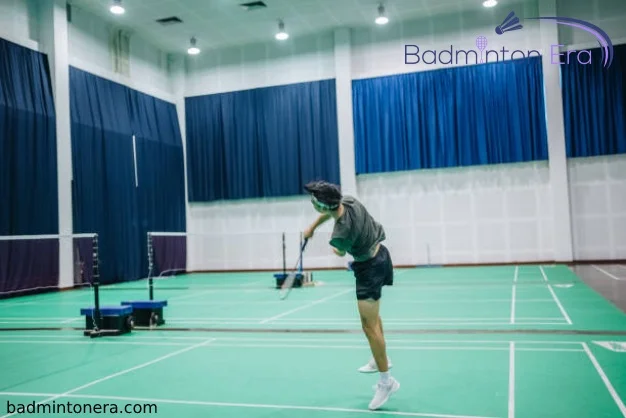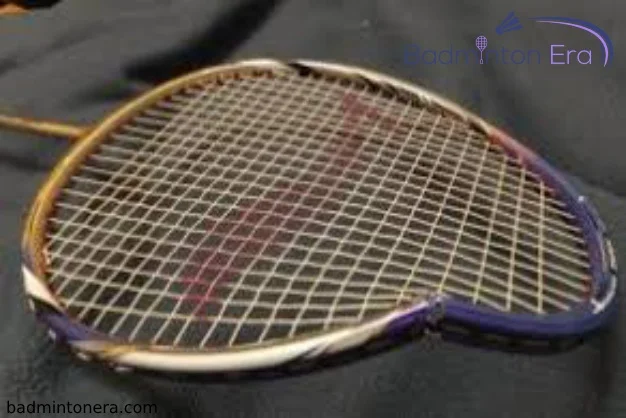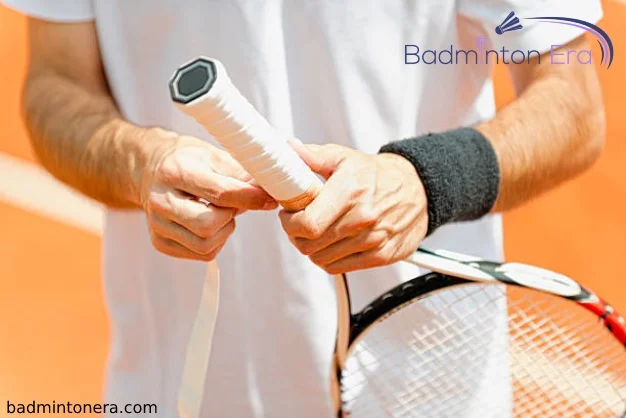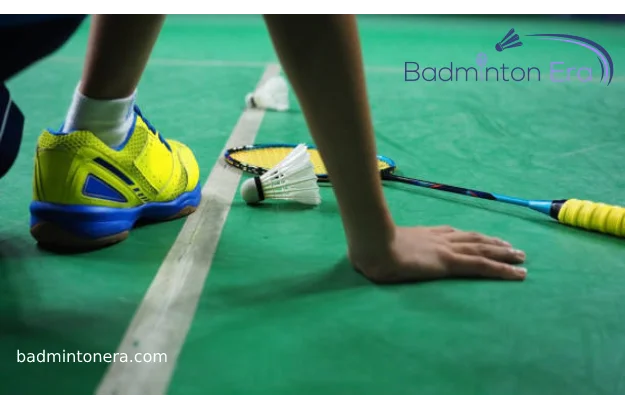string a badminton racket
Installing fresh string a badminton racket frame is what we call stringing. Players do it to meet personal tastes, maintain or enhance the performance of the racket, and stop wear and tear. Pre-strung racquets already have the strings attached. This has some adaptability and is a nice option for casual players. Unstrung racquets, on the other hand, let you adjust the string to your specific game. Advanced players can adjust the strings and tension to suit their playing preferences.
It is good to obtain expert assistance the first time while stringing a badminton racket because the process calls for skill and knowledge. It is safe to restring a badminton racquet by hand without the use of any specific equipment or instruments. You only need a racquet frame, undamaged strings, and perseverance to get a racquet back in playing shape. Recreational badminton players don’t need to pay for a new racquet or expensive restringing services to return to the court.
string into a badminton racket frame

Why stringing a badminton racket is important?
Restringing a badminton racket is necessary for several reasons, including:
1-Performance:
A racket’s performance and the player’s control of the shuttlecock can be impacted by the loss of tension in the strings over time. The tension of the racket can be recovered, which will enhance play.
2-Wear and tear:
Constant use might lead to the strings being frayed, worn out, or breaking. We can avoid wear and tear by restring the racket.
3-Personal preference:
String tension is something that different players enjoy, and restringing the racket can accommodate these tastes.
4-Damage:
If a string snaps, the racket may lose tension and play less well. It recovers the racket tension, which will enhance play.
Top 5 Badminton Strings For Strong Smash and Control:
Here is the list of the best strings, you must consider stringing a badminton racket.
- 0.65 mm YonexUltimax BG 66 Badminton Strings (Black)
- 0.65 mm YonexUltimax BG 66 Badminton Strings (Black)
- VS-890 for Victor (0.68mm x 10mm), Badminton string with high resilience
- Badminton string No. 7 from Li-Ning
- Aerosonic badminton string by Yonex
The tension required in racket string:
While stringing a badminton racket we must know the specific tension we are going to maintain in that racket. The extent of tension depends upon various factors like:
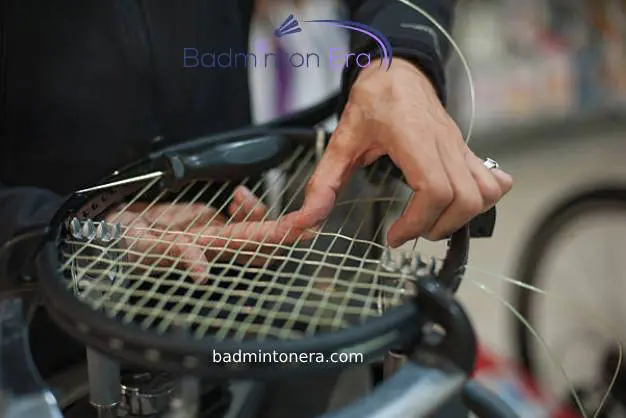
Player’s level:
According to your level, we’d recommend the following tensions as a general rule. To use high string tensions, you must be able to hit the “sweet spot” on the racket head with your shots, and as the tension increases, this region gets smaller. Beginners need lower string tension in badminton rackets. Its extent increases with the level of players.
- Beginner: 17 to 20 pounds
- Intermediate: 20 to 24 pounds
- Advanced – 24 to 27 pounds
- Professional: 27 to 30 pounds
Racket Tension Range:
It’s necessary to determine the maximum tension that each racket can hold. You must not exceed these recommended tensions because doing so could void the manufacturer’s warranty, deform the frame of the racket, or even cause it to crack or entirely break.
String durability:
You might consider purchasing durable strings if you don’t want to replace your strings too frequently. Only durable strings can bear high-tension stringing. Depending on how often you play, how neatly you strike the shuttle, and the tension level, a good set of strings should typically last a few months.
Shuttle type:
All of the aforementioned rules apply whether you play with feather shuttles. However, if you use plastic shuttles, it is important to reduce the racket string tension by 2-3 pounds. Due to the lesser weight, more effort is required to generate the desired power in a plastic shuttle.
How to string a badminton racket?
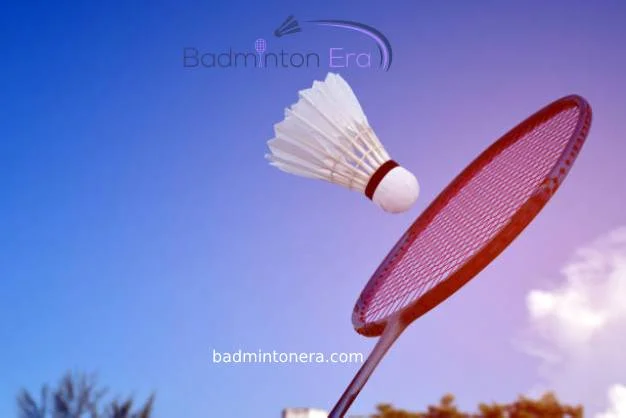
Badminton rackets continue to lose tension day by day. Therefore we need the restringing of badminton racket. You can do it simply by following these steps:
- Drag the string straight up to the corresponding hole at the top of the racquet by inserting one end of it through the hole at the bottom of the racquet that is closest to the shaft.
- Loop the string through the top two holes and drag it back down to the hole on the opposite side of the shaft you started from.
- Make sure the excess string is evenly divided so that each side has the same amount.
- Until you reach the part of the racquet that naturally starts to curve, keep stringing the racquet straight up and down on one side.
- There should be some extra string at the top once you’ve finished stringing.
- Pull on the strands to make slack in the line if there isn’t enough to properly tie off.
- To prevent the string from slipping back through the hole, tie a knot with your fingers (you might need to tie two knots on top of each other).To make the string taut and tight, pull on each strand, starting with the outside strand with the knot and working your way inward.
- Then, tie a knot at the top after repeating the stringing procedure on the opposite side of the racquet. Make sure to tighten your grip to eliminate any slack in the string and tie the knot as close as you can to the racquet’s hole.
- While tying the second knot, use the pliers to keep the strings taut. If you have problems tying a tiny, close knot with your fingers, you can also use the pliers to move the knot closer to the racquet’s hole.
- Tie the second string to the racquet frame to start the horizontal stringing. Create a knot with your fingers on the inside of the frame starting at the fourth hole from the base. The seventh hole from the base is where you should loop the string back inside.
- You must weave the fresh string over and under each vertical strand while stringing the horizontal strands, keeping the string taut.
- Change from over-under to under-over with each new row of the racquet’s stringing to ensure that every other horizontal string has the same configuration. Your racquet should start to take on the appearance of the picture and a weaving pattern should start to develop.
- Pull the strings tight at the end of the strand, just before the racquet starts to naturally curve. To eliminate any slack in the string, you might need to pull on each strand from the base upward. Make sure the strings are tightly wound and have little give when your hand is pressed down on them.
- Put a knot on the string that is attached to the racquet’s outside. For the best tension, tie the knot extremely near to the racquet; pliers can be used to slide the knot down to the frame. It might be required to tie multiple knots to stop the thread from slipping back through the hole.
- The finished product is prepared. When you gently press down on the strings with your hand, there shouldn’t be much movement.

